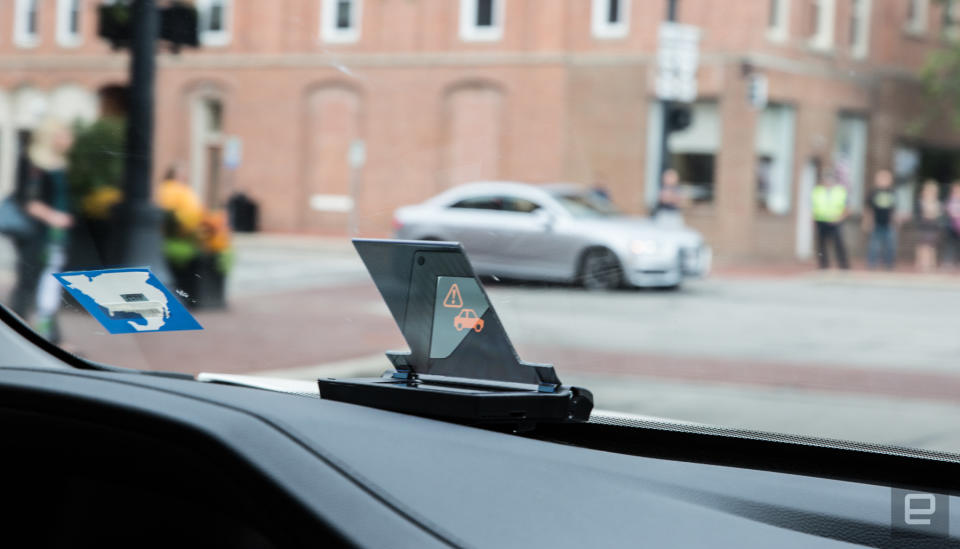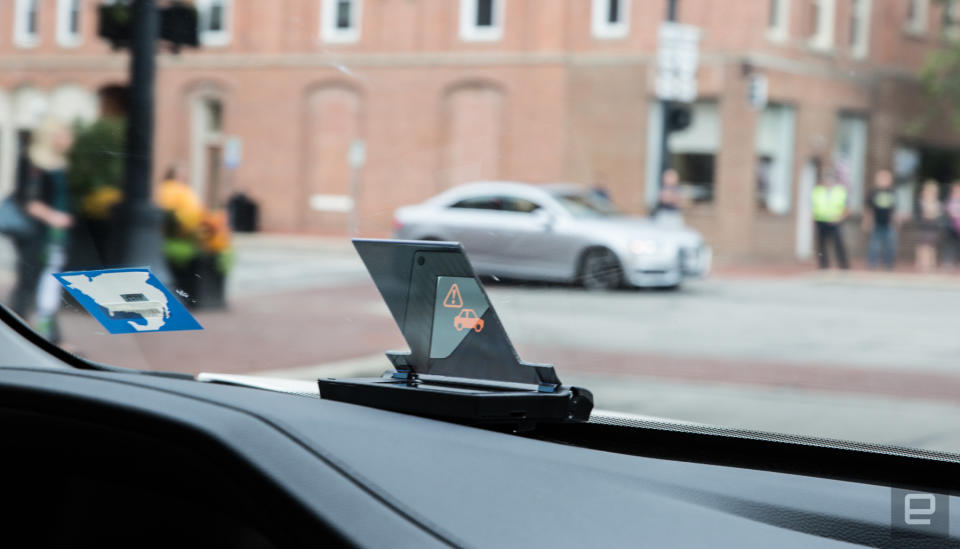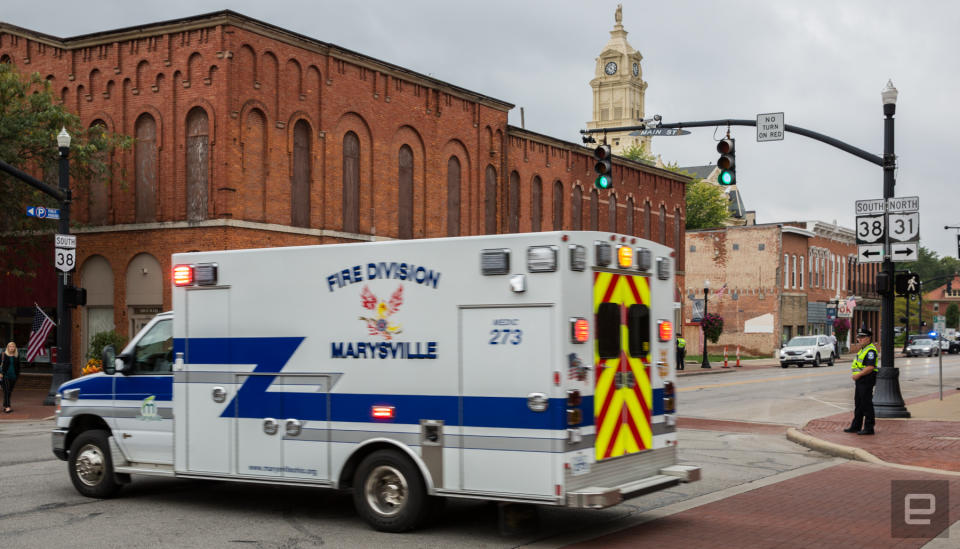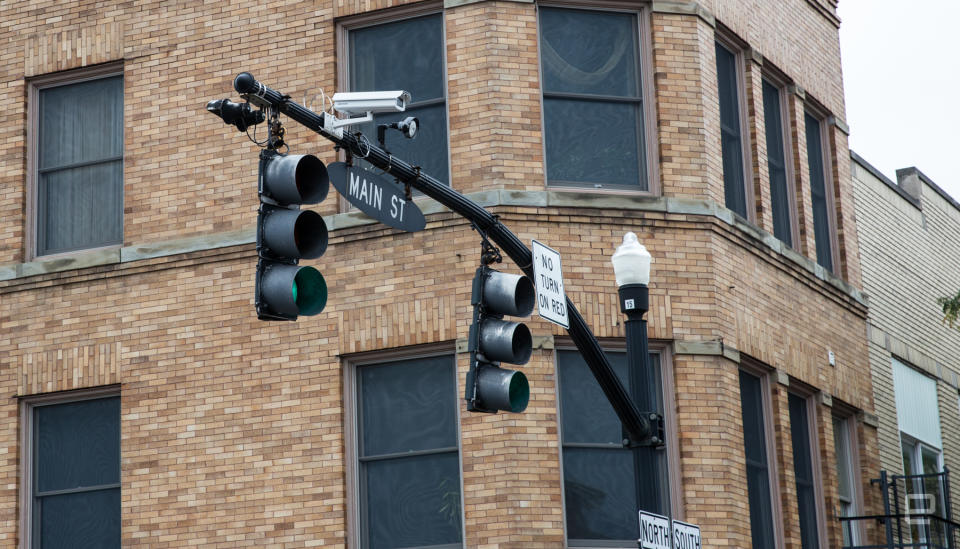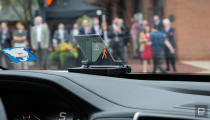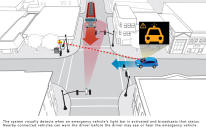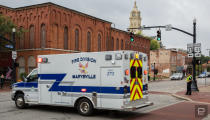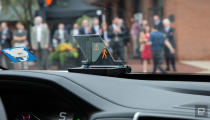Honda's smart intersection tells drivers what's around the corner
This intersection sees more than you or your car can.
As the Honda Pilot is about to enter the intersection a specially built HUD (heads-up display) flashes an orangish yellow with an image of an ambulance. Seconds later an actual ambulance that, moments before, the driver could not see barrels though the intersection with its lights on (no sirens). We watch the emergency vehicle drive off and continue through the intersection.
This is a demo of Honda's smart intersection in Marysville, Ohio (home to a Honda vehicle manufacturing facility). The presentation also alerted the driver when an out-of-view pedestrian was crossing the street while turning right at the intersection and when another driver ran a red light.

By placing cameras above the traffic lights on the Fifth and Main junction, Honda has built a smart intersection that warns drivers of potential issues. The wide-angle cameras keep an eye on the roads leading to the intersection and recognize pedestrians, cars and emergency vehicles. It dumps the actual video footage and sends the raw data to specially built HUDs that'll reside in 20 pilot vehicles (initially) driven by Honda employees.
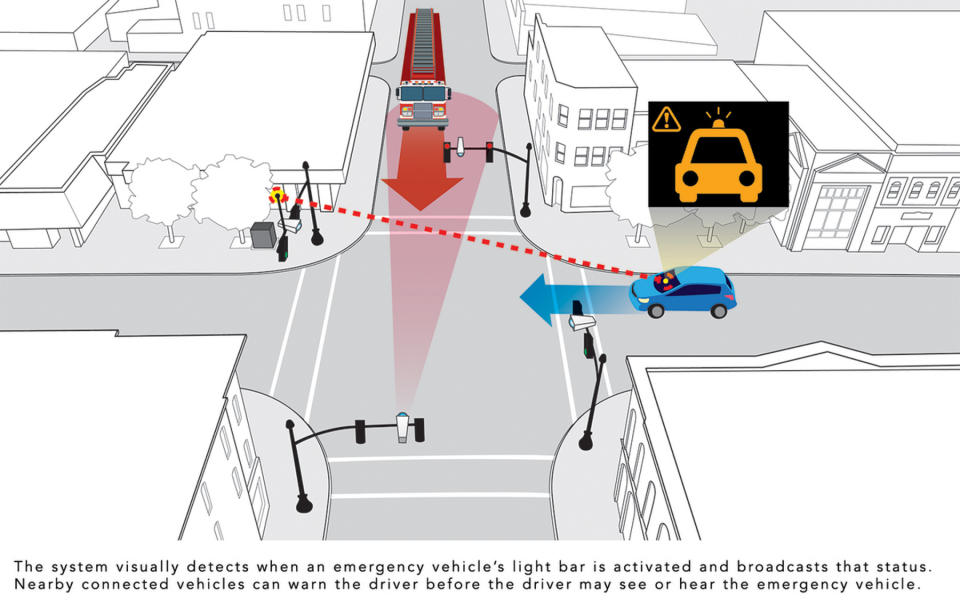
That number will eventually grow to a few hundred cars as the automaker studies the data it gathers from incidents at the intersection. It's part of the automaker's research into reducing injuries and fatalities both car to car and car to pedestrian, bicycle and motorcyclist.
"We cannot realize the dream of zero collisions – for our customers and society as a whole – based only on highly automated vehicles," said Ted Klaus, vice president of strategic research at Honda R&D Americas. Honda realized that the infrastructure and technology like vehicle-to-everything (V2X) are integral parts of that zero-collisions dream.

Honda isn't the only automaker researching cars talking to the infrastructure. In Las Vegas and Washington, DC, Audi has worked with those cities to outfit intersections that work with that automaker's countdown traffic lights.
But neither automaker is an infrastructure company. While their research is important, it takes local and national governments to implement features like this. But before they do anything, the industry and regulators need to come to an understanding on how that'll happen.
It's about helping to create standards that are put together by automakers, governments and suppliers. Honda was involved in creating global standards for crash test dummies, for example. The company doesn't build those dummies, but it's important for automakers to be part of the process that leads to a system that helps speed up adoption of a smarter infrastructure.

In the meantime, there are pilot programs in towns like Marysville, Ohio. Honda knows this is only a small step towards a smarter infrastructure that reduces collisions. Relying completely on autonomous cars that may take decades to populate our cities is folly. For safer streets for everyone, cities and automakers have to work together and those programs should start sooner rather than later.
On occasion Engadget will accept travel and lodging from auto manufacturers to test drive vehicles not yet available for review from a local fleet. We do this to make sure our readers have the latest information about new vehicles. This is standard practice in the automotive journalism world. This in no way colors our editorial coverage of the vehicle or of the automaker themselves.
